A Large Dresser with Plenty of Drawers
There is nothing better than a large dresser, right? In my opinion, this dresser is the ultimate! With an open base and clean lines, the DIY plans to build a Serenity dresser are very easy to construct even with all twelve drawers! Though it may take more than one weekend to construct, these DIY plans to build a dresser will be well worth the effort!
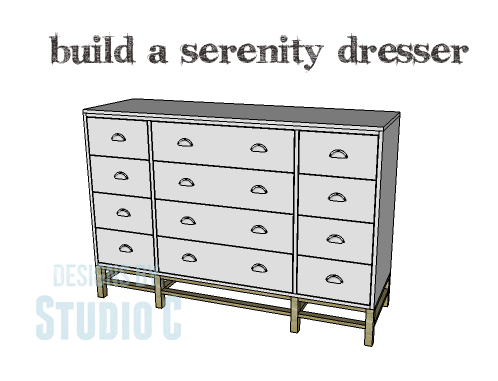
Materials:
- 1-1/4″ pocket hole screws
- 1-1/4″ brad nails
- 1-1/4″ screws
- Edge banding, optional
- 12 – 18″ Drawer slides, preferably the ball-bearing type! (<– affiliate link!)
- Cabinet pulls
- Wood glue
- Sandpaper (100, 150, 220 grits)
- Finishing supplies (primer & paint, or stain, sealer)
Lumber:
- 6 – 1×2 at 8′
- 10 – 1×8 at 8′
- 1 – 2×2 at 4′
- 1 – 4′ x 8′ sheet of 1/4″ plywood
- 3 – 4′ x 8′ sheets of 3/4″ plywood
Cut List:
- 8 – 2×2 at 8″ – Legs
- 8 – 1×2 at 17″ – Base Framing
- 8 – 1×2 at 14″ – Base Framing
- 4 – 1×2 at 30-1/2″ – Base Framing
- 1 – 3/4″ plywood at 20″ x 63″ – Bottom
- 2 – 3/4″ plywood at 20″ x 35-1/4″ – Sides
- 2 – 1×2 at 63″ – Stretchers
- 2 – 3/4″ plywood at 20″ x 34-1/2″ – Dividers
- 1 – 1/4″ plywood at 34-7/8″ x 63-3/4″ – Back
- 1 – 3/4″ plywood at 20″ – 64-1/2″ – Top
- 8 – 3/4″ plywood at 12-5/8″ x 16-1/2″ – Smaller Drawer Box Bottoms
- 16 – 1×8 at 16-1/2″ – Smaller Drawer Box Sides
- 16 – 1×8 at 14-1/8″ – Smaller Drawer Box Front & Back
- 4 – 3/4″ plywood at 16-1/2″ x 28-3/4″ – Center Drawer Box Bottoms
- 8 – 1×8 at 16-1/2″ – Center Drawer Box Sides
- 8 – 1×8 at 30-1/4″ – Center Drawer Box Front & Back
- 8 – 3/4″ plywood at 8-1/4″ x 14-7/8″ – Smaller Drawer Fronts
- 4 – 3/4″ plywood at 8-1/4″ x 31″ – Center Drawer Fronts
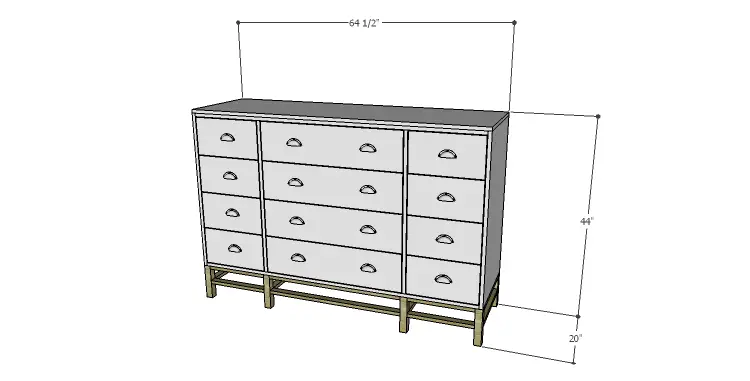
Click on the drawings for a larger view!
Step One
Edge banding will be applied to the exposed edges of the plywood prior to assembly.
Cut the pieces for the legs and the base framing. With the pocket hole jig set for 3/4″ material, drill pocket holes in each end of the 1×2 framing pieces. Assemble the base frame as shown in the drawings using glue and 1-1/4″ pocket hole screws. If the pocket holes on the top row of framing face up and the pocket holes on the bottom row of framing face down, the pocket holes will not have to be filled!
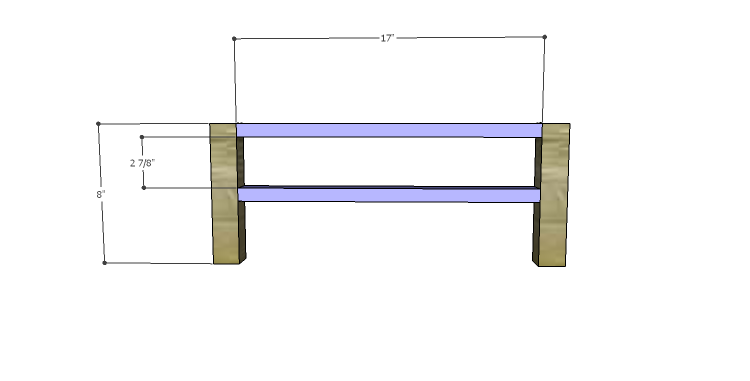
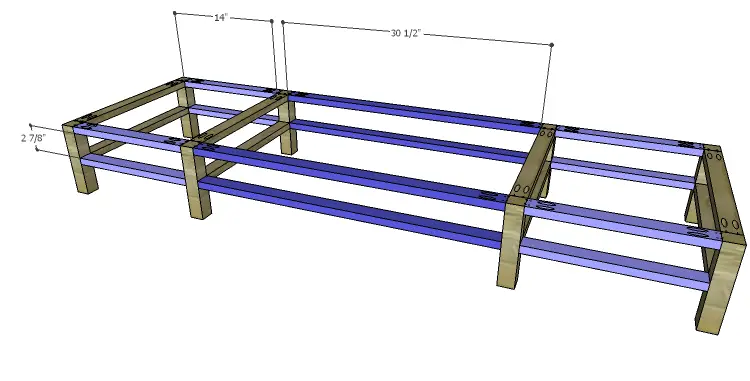
Step Two
Cut the piece for the bottom and drill pocket holes in the shorter edges. Position the bottom piece on the base with the pocket holes facing up. The front and back edges will be flush with the front and back of the base frame, and the sides of the bottom will be 3/4″ back from the side edges of the base frame. Secure in place using glue and 1-1/4″ brad nails through the bottom into the frame.
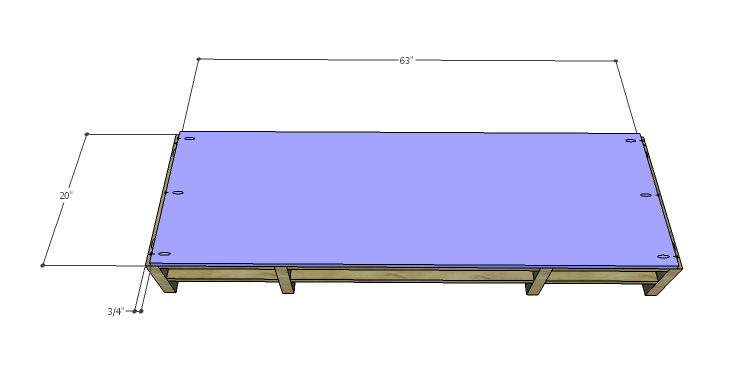
Step Three
Cut the pieces for the sides. Position the sides on the base frame next to the bottom, and secure the bottom to the sides using glue and 1-1/4″ pocket hole screws.
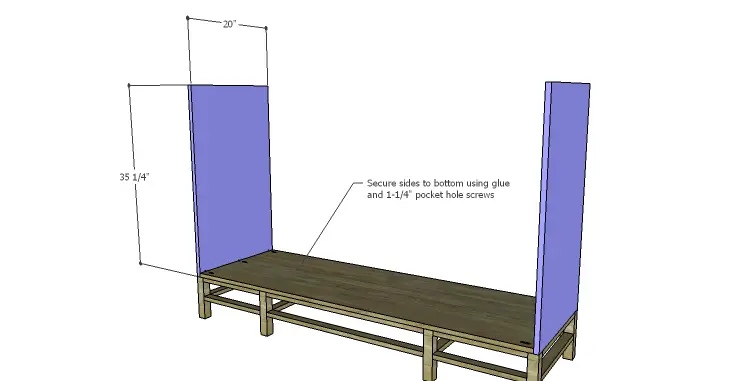
Step Four
Cut the pieces for the upper stretchers and drill pocket holes in each end. Secure the stretchers to the sides using glue and 1-1/4″ pocket hole screws, orienting the pocket holes so they face up.
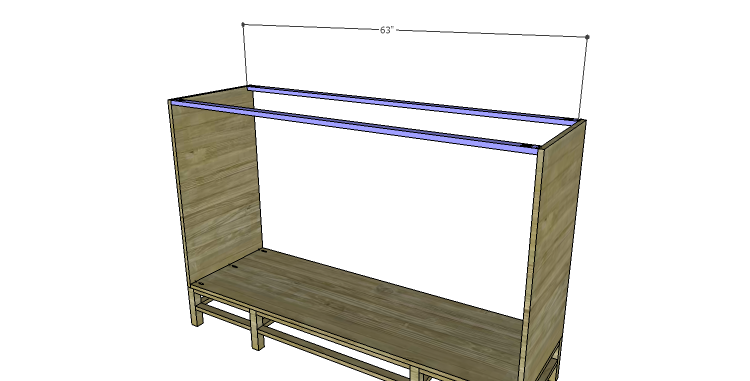
Step Five
Cut the pieces for the dividers and drill pocket holes in the bottom edge only of each piece. Cut the notches using a jigsaw. Secure the dividers to the bottom using glue and 1-1/4″ pocket hole screws. Add a few brad nails through the stretchers into the notches to further secure the dividers.
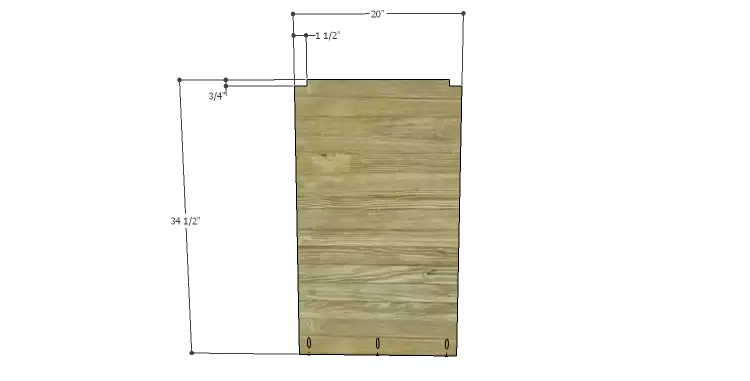
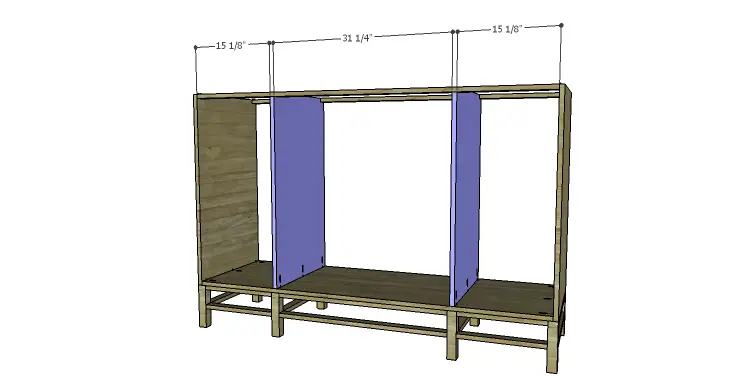
Step Six
Cut the piece for the back. Center the back on the frame of the dresser and secure in place using glue and 1-1/4″ brad nails.
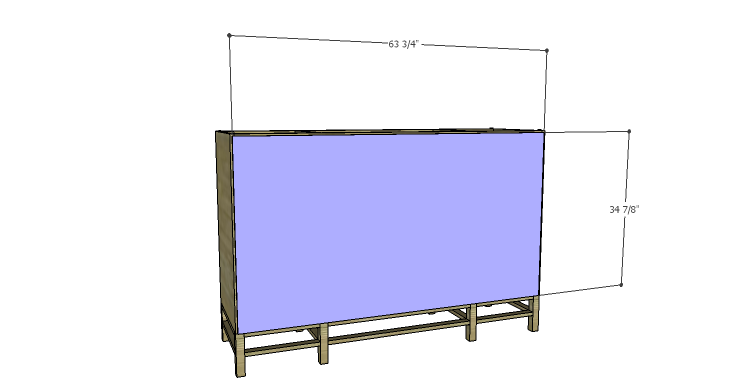
Step Seven
Draw lines on the sides and the dividers to mark the position of the drawer slides. The lines will mark the bottom of the drawer slides, and the drawer slides will be positioned 3/4″ back from the front edge of the sides and the dividers. Install the drawer slides according to the manufacturer’s instructions staggering the screws on the dividers so they don’t contact one another.
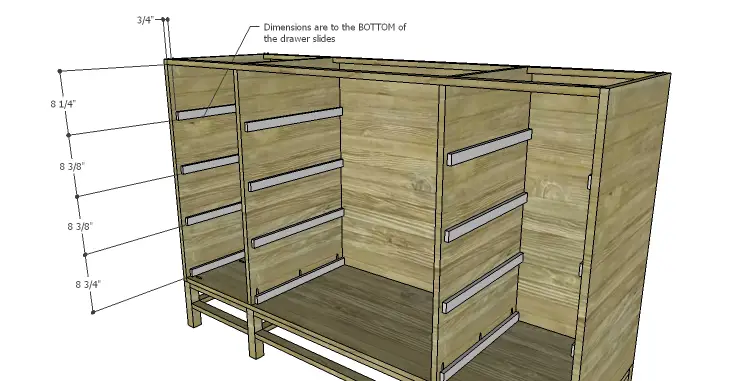
Step Eight
Cut the piece for the top. The top will be flush with the cabinet on all sides. Secure in place using glue and 1-1/4″ brad nails through the top into the sides, stretchers, and dividers.
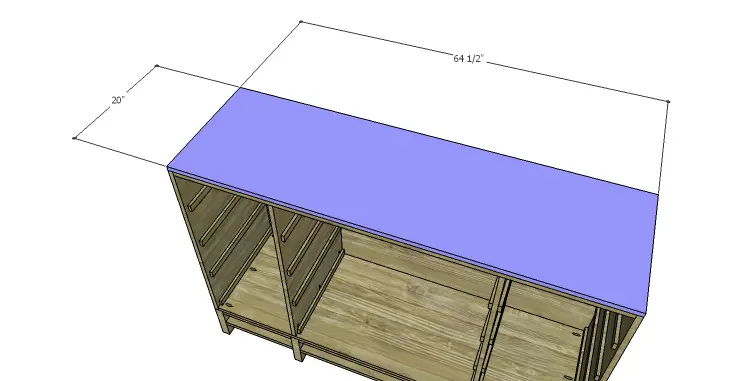
Step Nine
Cut the pieces for the drawer boxes. Drill pocket holes in all four edges of the bottom as well as each end of the sides. Assemble the drawer boxes as shown using glue and 1-1/4” pocket hole screws. Install the drawer slides according to the manufacturer’s installation instructions, making any necessary adjustments.
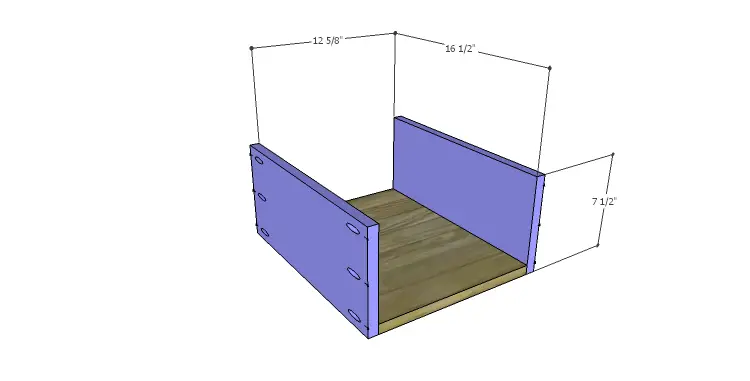
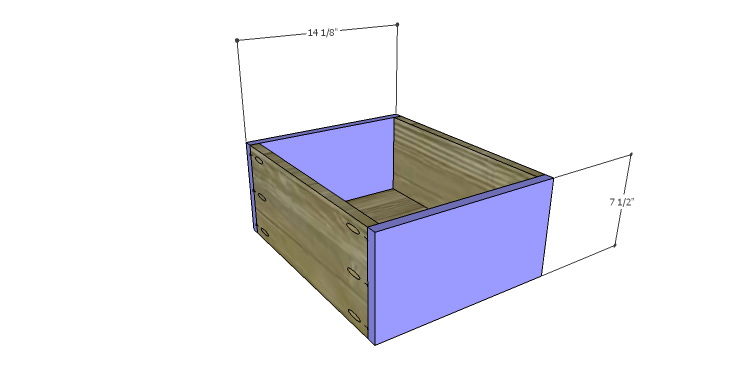
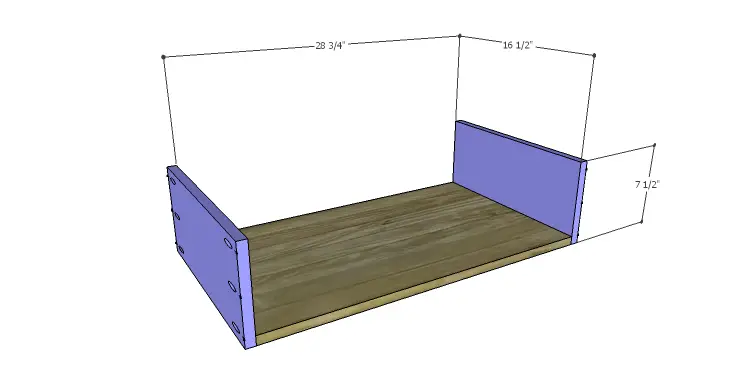

Step Ten
Cut the pieces for the drawer fronts. Mark the position for the drawer pulls and drill the holes. Starting with the drawer front on the bottom, shim the drawer front in the opening – there will be a 1/8” gap around all sides – then drive screws through the holes for the drawer pulls into the drawer box. Open the drawer, and secure the drawer front using countersunk 1-1/4” screws from the inside. Remove the screws from the holes for the drawer pull then finish drilling the holes. Install the drawer pull. For guidance, refer to this tutorial on installing drawer fronts.
Continue installing the drawer fronts from the bottom up with a 1/8″ gap between them.
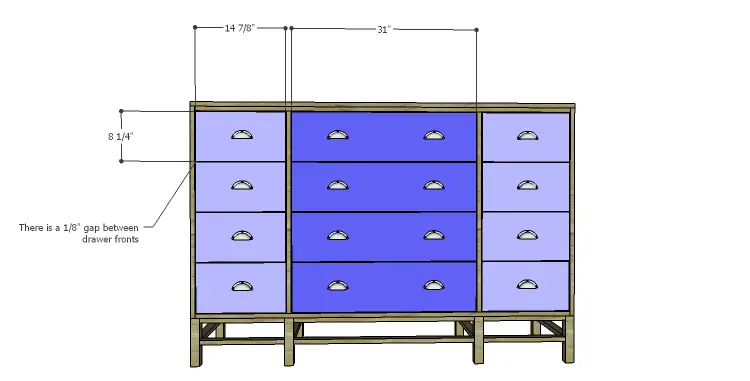
Finish the dresser as desired!
Whether painted or stained, the dresser would also be a great accent in a dining room to store linens and china, or even as a media center! Leave a comment below or contact me at cher {at} designsbystudioc {dot} com if there are any questions about the DIY plans to build a Serenity dresser!
Originally posted 2014-09-16 08:00:30.

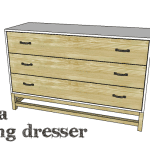
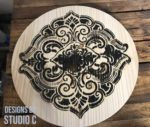
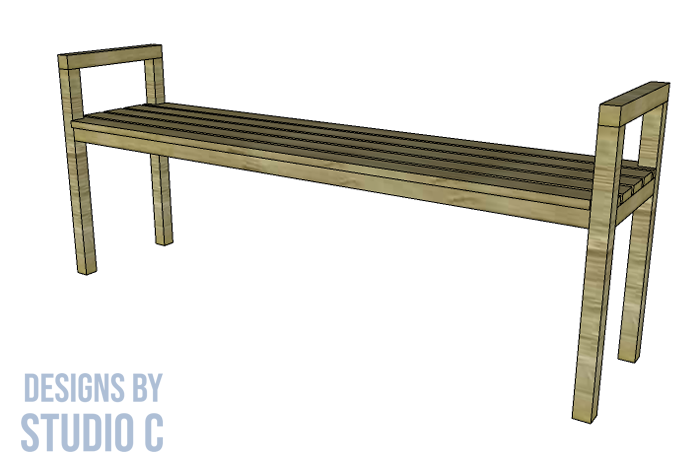

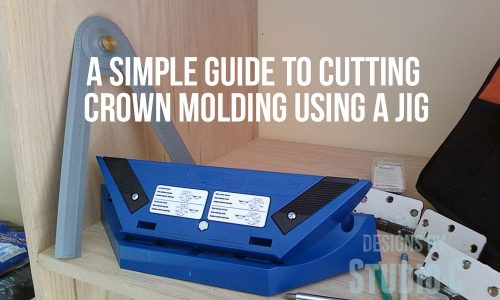
Comments are closed.